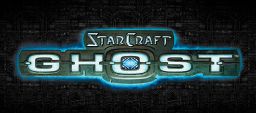
StarCraft: Ghost was a military science fiction stealth-action video game developed by Blizzard Entertainment. It was intended to be part of Blizzard's StarCraft series and was announced in September 20, 2002. It was to be developed by Nihilistic Software for the GameCube, Xbox, and PlayStation 2 video game consoles. Several delays in development caused Blizzard to move back the release date and the game has not materialized. Nihilistic Software ceded development to Swingin' Ape Studios in 2004 before Blizzard bought the company, and plans for the GameCube version were canceled in 2005.
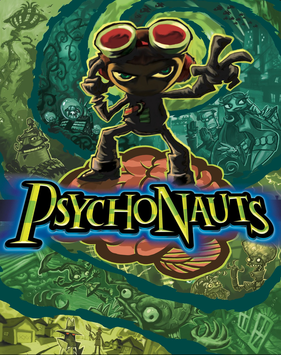
Psychonauts is a 2005 platform video game developed by Double Fine Productions and published by Majesco Entertainment for Microsoft Windows, Xbox and PlayStation 2.
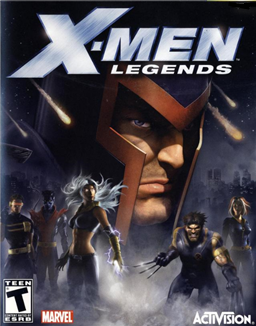
X-Men Legends is an action role-playing video game developed by Raven Software and published by Activision. It was released on the GameCube, PlayStation 2 and Xbox consoles in 2004. Barking Lizards Technologies developed the N-Gage port of the game, which was released in early 2005. Players can play as one of fifteen X-Men characters, with the ability to switch between four computer- or human-controlled characters at any time.
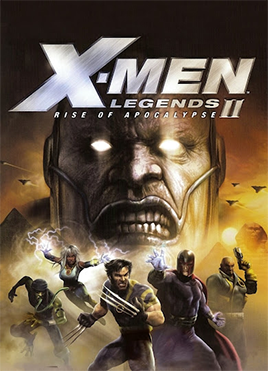
X-Men Legends II: Rise of Apocalypse is an action role-playing game developed primarily by Raven Software and published by Activision. It is the follow-up to 2004's X-Men Legends. It was released in September 2005 for the GameCube, Microsoft Windows, N-Gage, PlayStation 2, PlayStation Portable and Xbox. It is set after the events of X-Men Legends and features the mutant supervillain Apocalypse as the primary antagonist.

Psychic Force is a 1995 fighting arcade game created by Taito which was ported to the PlayStation in 1996 and 1997. The PlayStation version was released by Acclaim in North America and PAL regions. The game is a 3D fighter which combines the normal features of an arcade fighting game with psychic powers. There are eight playable characters and a final boss who is playable through the use of a code. Psychic Force was released without much hype and was not commercially successful. Psychic Force would later get an arcade-exclusive update titled Psychic Force EX, which was released a year later in 1996. EX made the final boss playable without using a code, added new color schemes for the costumes, and improved and balanced the gameplay. In 1998, a sequel was released under the title Psychic Force 2012 also for the arcade, and was ported to the Dreamcast console in 1999. It was eventually adapted to the PlayStation under the title Psychic Force 2, which was released in Japan on October 7, 1999, and later to the PAL regions in 2001.

Spider-Man: The Video Game, also known as Spider-Man, is a 1991 arcade video game developed by Sega based on the Marvel Comics character Spider-Man.

Cauldron II: The Pumpkin Strikes Back is a video game developed and published by British developer Palace Software as a sequel to their 1985 game Cauldron. The 2D platform game was released in 1986 for the ZX Spectrum, Commodore 64, and Amstrad CPC home computers. Players control a bouncing pumpkin that is on a quest of vengeance against the "Witch Queen". The roles of the two were reversed from the first game, in which the witch defeated a monstrous pumpkin.
Psionics, in tabletop role-playing games, is a broad category of fantastic abilities originating from the mind, similar to the psychic abilities that some people claim in reality.

X-Men 2: Clone Wars is a 1995 platform game developed by Headgames and released by Sega of America for the Mega Drive/Genesis as a sequel to the 1993's X-Men. The game is based on the adventures of the Marvel Comics superhero team, the X-Men. A sequel, titled X-Women, was cancelled.

Psycho Soldier is a platform game developed by Japanese software company SNK. It was released in 1987. It is a distant sequel to Athena, released a year earlier, featuring a late descendant of that game's main character. Ocean Software on their Imagine label released home computer versions of the game for the ZX Spectrum, Commodore 64 and Amstrad in 1987.

Xyanide is a video game developed by Playlogic Entertainment and published by Evolved Games for the Xbox in 2006. Described as an "innovative amalgam of 2D shooting and modern 3D effects", Xyanide is a 3D interpretation of the 2D side-scrolling shoot 'em up genre. The game was developed in line with a series of unreleased titles for the Game Boy Advance by Engine Software and Nokia N-Gage by Overloaded Pocket Media, with a mobile version of the game being released in 2005. Xyanide was released in 2006 as the final exclusive title to be released for the Xbox. A sequel of the game, Xyanide: Resurrection, released by Playlogic in 2007 for the PlayStation 2, PlayStation Portable and PC.
Brian R. Eddy is an American game designer and programmer, best known for designing Attack From Mars pinball for Midway and programming FunHouse and, with Larry DeMar, The Machine: Bride of Pin*Bot. While at Williams Electronics / Midway Games, he also designed Medieval Madness, and programmed Indiana Jones: The Pinball Adventure. Eddy holds three patents related to game design.

Pocky & Rocky 2, released in Japan as Kiki Kaikai: Tsukiyo Soushi, is a shoot 'em up video game developed and published by Natsume in Japan and North America, and published in PAL regions by Ocean Software for the Super NES video game console. It is the sequel to Pocky & Rocky.

Psychonauts 2 is a platform game developed by Double Fine and published by Xbox Game Studios. The game was announced at The Game Awards 2015 ceremony, and released on August 25, 2021 for PlayStation 4, Windows, Xbox One and Xbox Series X/S, and on May 24, 2022 for Linux and macOS.

Psychonauts in the Rhombus of Ruin is a virtual reality adventure game developed by Double Fine Productions. It was released for PlayStation VR in February 2017 and on Microsoft Windows in April 2018. The game's story bridges the events between Psychonauts and Psychonauts 2.

The World Is Not Enough is a first-person shooter video game developed by Black Ops Entertainment and based on the 1999 James Bond film of the same name. It was published by Electronic Arts and released for the PlayStation on November 7, 2000, shortly after the release of its Nintendo 64 counterpart. The World Is Not Enough is the successor to Black Ops Entertainment's 1999 title Tomorrow Never Dies and uses an improved version of its engine. The game received mixed reviews from critics, who criticised its short length and lack of multiplayer mode.
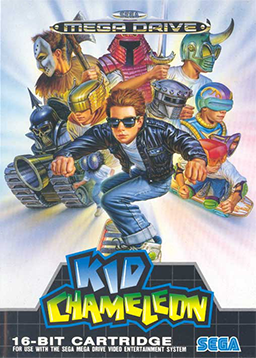
Kid Chameleon is a 1992 platform game developed and published by Sega released for the Sega Genesis. In the game, a boss character with artificial intelligence in a virtual reality video game begins abducting players and the main protagonist Casey goes in to beat the game and rescue them. He does this by using masks to shapeshift into different characters in order to use different abilities. It was later released in Japan. After its initial release in 1992 for the Genesis, it was later re-released a number of times in the 2000s, including part of the Sega Smash Pack 2 for the PC in 2000, the Sega Genesis Collection for the PlayStation Portable and PlayStation 2 in 2006, as a digital release on the Wii's Virtual Console in 2007, Sonic's Ultimate Genesis Collection for Xbox 360 and PlayStation 3 in 2009 and for the Sega Forever service in 2017.
Parascientific Escape: Cruise in the Distant Seas is a visual novel adventure game developed by Intense. It was published for the Nintendo 3DS via the Nintendo eShop by Intense in Japan, and CIRCLE Entertainment in Western territories. It is the first entry in the Parascientific Escape series and was released on July 9, 2014 in Japan and March 3, 2016 in Western territories. A sequel, Parascientific Escape - Gear Detective, was released in 2015 in Japan and 2017 in Western territories.
Parascientific Escape is a series of visual novel adventure games developed by Intense and released for the Nintendo 3DS via the Nintendo eShop. It was published by Intense in Japan and CIRCLE Entertainment in North America and Europe. The trilogy follows the interconnecting narrative of the characters Hitomi Akeneno and Kyosuke Ayana, who both have psychic abilities.
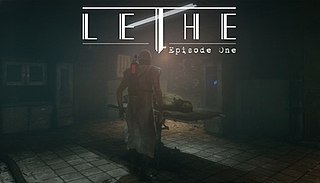
Lethe – Episode One is a 2016 first-person survival horror video game created by Greek indie developer Koukou Studios and published by Faber Interactive. It was released on 1 August 2016. Episode One is the first game of the Lethe series of planned video games that take place in the same universe but as of March 2018, no other episodes were published, which is why Episode One is also referred to as Lethe.
















